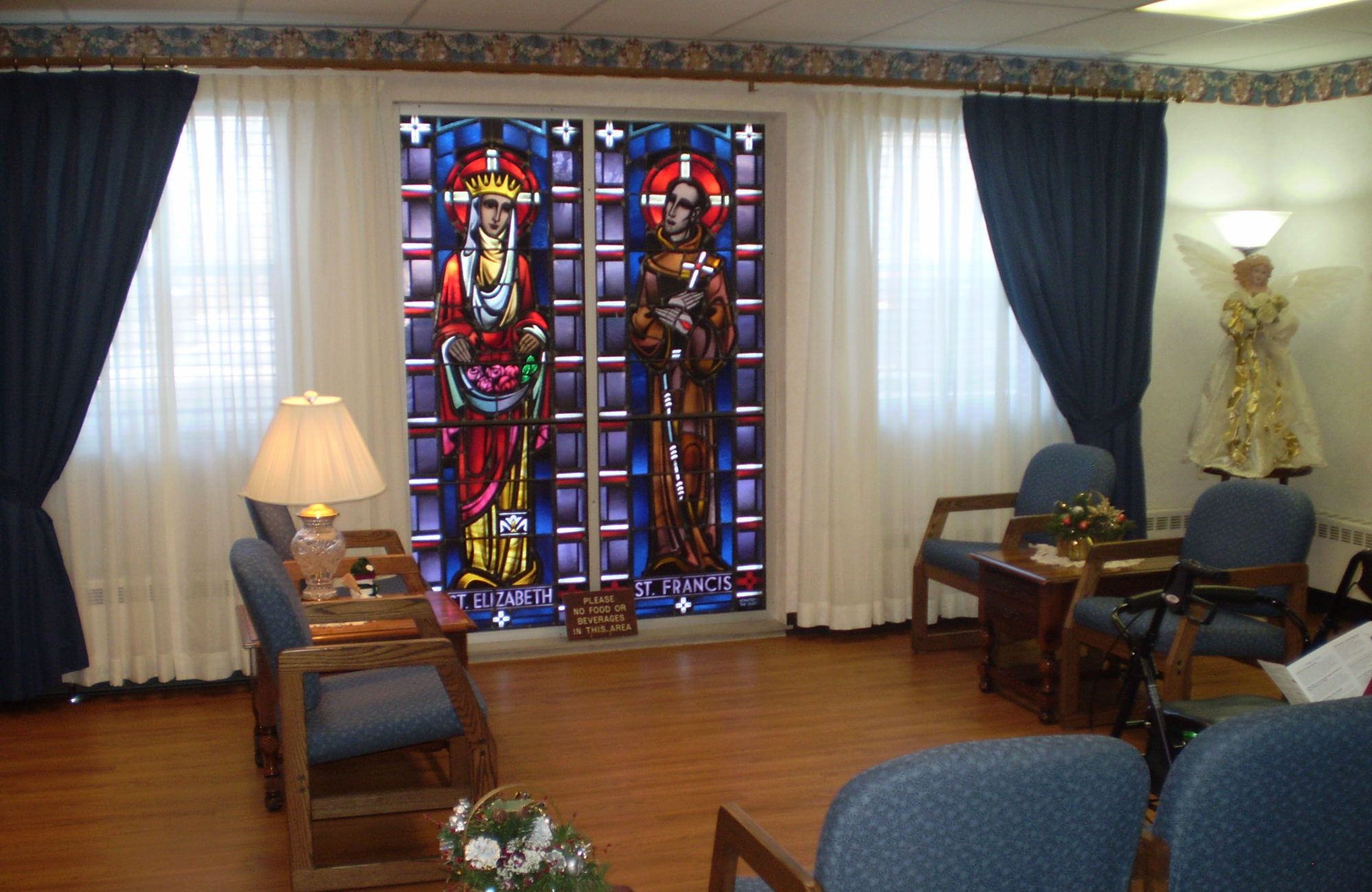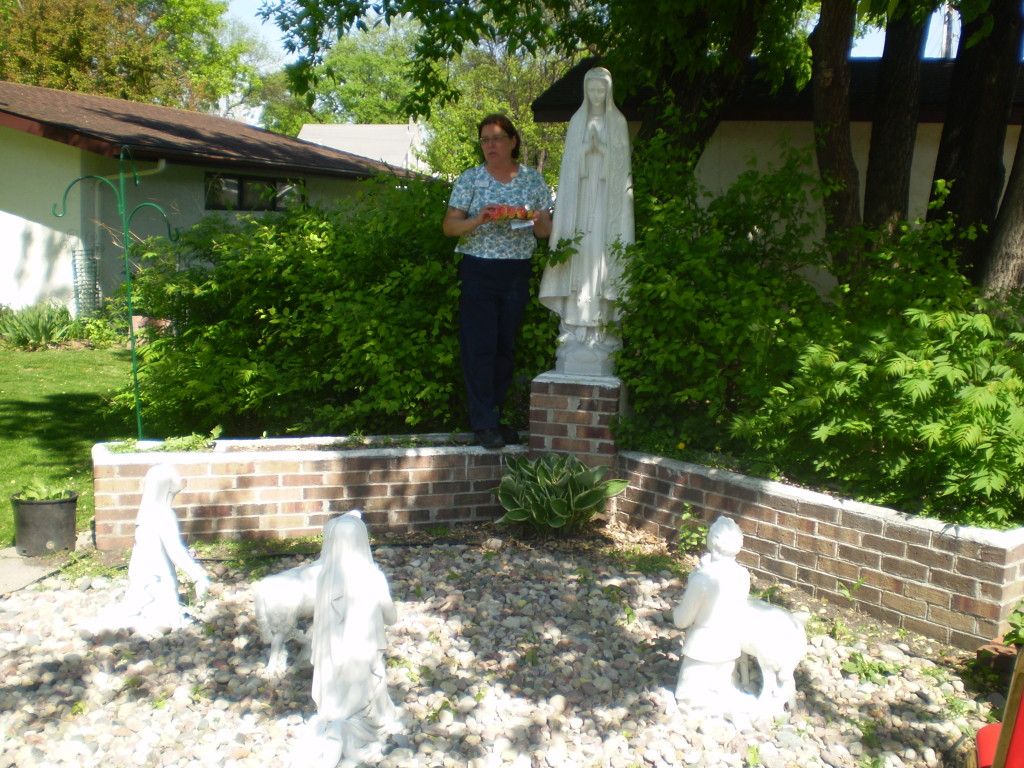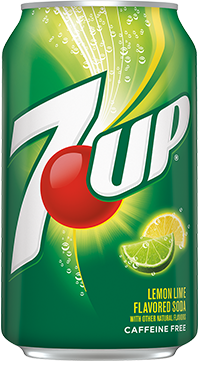
This year, as we mark her feast, we’re also hosting a celebration in honor of our 65 years in Grand Forks. Please join on Monday. July 24th at 2 p.m. in our activity room for music, memories and a piece of cake.
You may read weekly posts on the St. Anne’s Scoop and be familiar with “St. Anne’s Guest Home,” but do you know who Saint Anne really was?
St. Anne is Mary’s mother, Jesus’ grandmother. Her feast day is July 26.
We do not know a lot about Anne and her husband Joachim, but legend has it that they were elderly and childless before Mary was born to them.
A statue near the reception desk at St. Anne’s Guest Home depicts St. Anne instructing her daughter (Mary) in the 10 Commandments. It was re-painted within the last couple of years by Dennis Narlock. At the end of this post, you’ll find a poem about our patroness written by Sr. Christina.
Stay tuned for more information on our upcoming festivities.
Poem in Honor of Sts. Anne and Joachim,
parents of Mary
~ ~ ~
(based on early legends)
We make a special point each year
To honor Anne, our patron dear
When e’er her feast day comes around
Joy and fun times will abound.
This week we’ll honor Sts. Joachim and Anne.
They had a special place in God’s plan.
Though old and childless they’d become
grandparents of His only Son.
We don’t know much about this pair
but generous love they both did share.
With a special daughter they were blest
And ancient tales tell us the rest.
They were both from David’s clan,
This old woman and old man.
One eve while praying in the hills
Joachim heard news his heart to thrill.
At the same time his holy wife
heard some news that changed her life.
She was taking a garden stroll
when from her eyes great tears did roll. —
A nest of young birds she had seen,
making her sorrow very keen.
Seeing these babies pierced her heart
like a stinging little dart.
For she wanted a babe of her own
One to be her own flesh and bone.
For this favor the couple did pray,
pleading for it ev’ry day.
To both, separately, an angel did speak
Off’ring the favor both did seek,
telling then that their prayer’d been heard
though at their age it seemed absurd.
Anne was told a daughter she’d bear
who would be blest through ev’rywhere.
She then met Joachim at the gate
and with him did jubilate.
Mary was born, and at three years of age
her life’s story turned a page.
Now in the temple she would live;
Her life to God she’d surely give.
Her parents brought her there one day,
in God’s presence to work and play.
They gave her wholly to the Lord
whom they both faithfully adored.
Thus goes the story of that holy pair
Their longed-for daughter they did share.
And in due time they both became
Grandma and Grandpa, called by name.



 Please pardon our stealing of the expression (from the national program broadcast on PBS each year), but we’re having a “Capitol Fourth” here at St. Anne’s today.
Please pardon our stealing of the expression (from the national program broadcast on PBS each year), but we’re having a “Capitol Fourth” here at St. Anne’s today. Here at St. Anne’s (like anywhere else), we find that communication is very important. Whether it be giving report to fellow staff or alerting a resident to an upcoming appointment, good communication is key.
Here at St. Anne’s (like anywhere else), we find that communication is very important. Whether it be giving report to fellow staff or alerting a resident to an upcoming appointment, good communication is key.

 From time to time Sister Ann Marie, our Provincial Superior, comes to visit us. She brings along Greek Yogurt to eat as her breakfast, adding lots of granola. So when she planned on coming this last time I thought I would be hospitable and have some on hand for her. Of course, I got the flavored version. She brings the plain.
From time to time Sister Ann Marie, our Provincial Superior, comes to visit us. She brings along Greek Yogurt to eat as her breakfast, adding lots of granola. So when she planned on coming this last time I thought I would be hospitable and have some on hand for her. Of course, I got the flavored version. She brings the plain.


 Although some of our residents are on fluid restrictions for health reasons, and others really like their pop, as the weather starts to warm up, we encourage the majority of them to drink plenty of water.
Although some of our residents are on fluid restrictions for health reasons, and others really like their pop, as the weather starts to warm up, we encourage the majority of them to drink plenty of water. Recently, when staff went shopping for the various needs of departments around St. Anne’s, 7 Up was on the list. The nurses wanted some to give residents when they have stomach upset.
Recently, when staff went shopping for the various needs of departments around St. Anne’s, 7 Up was on the list. The nurses wanted some to give residents when they have stomach upset.